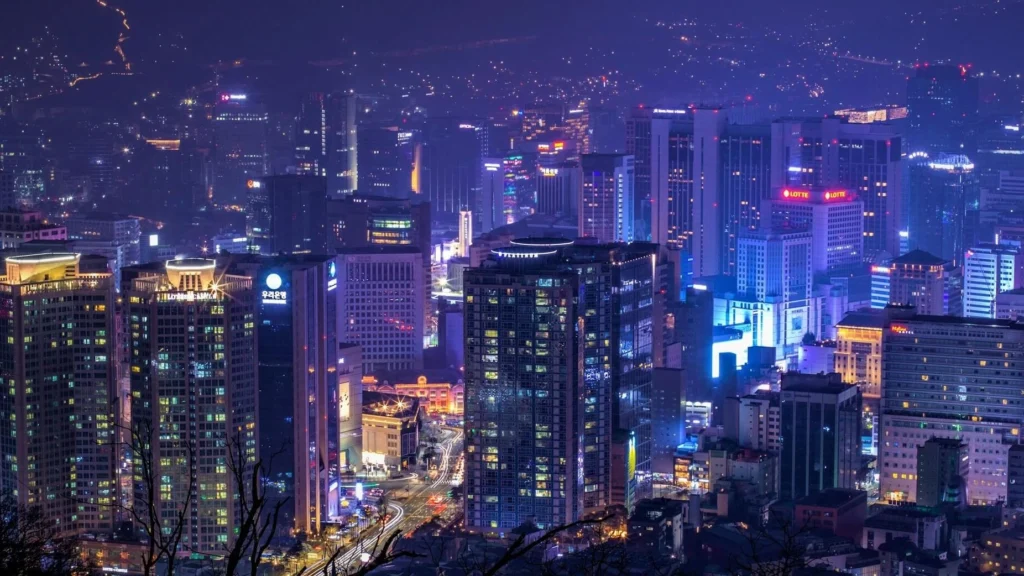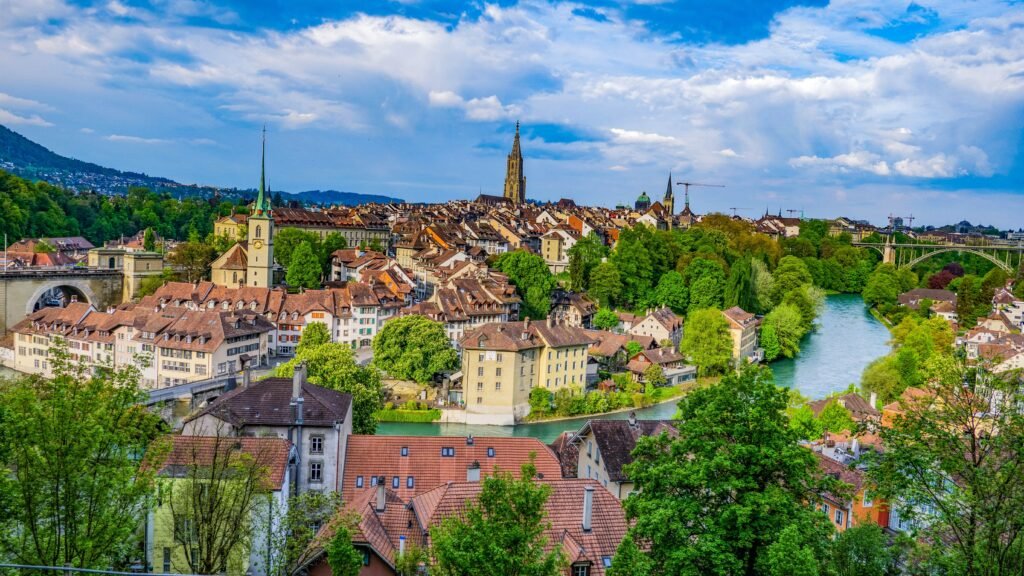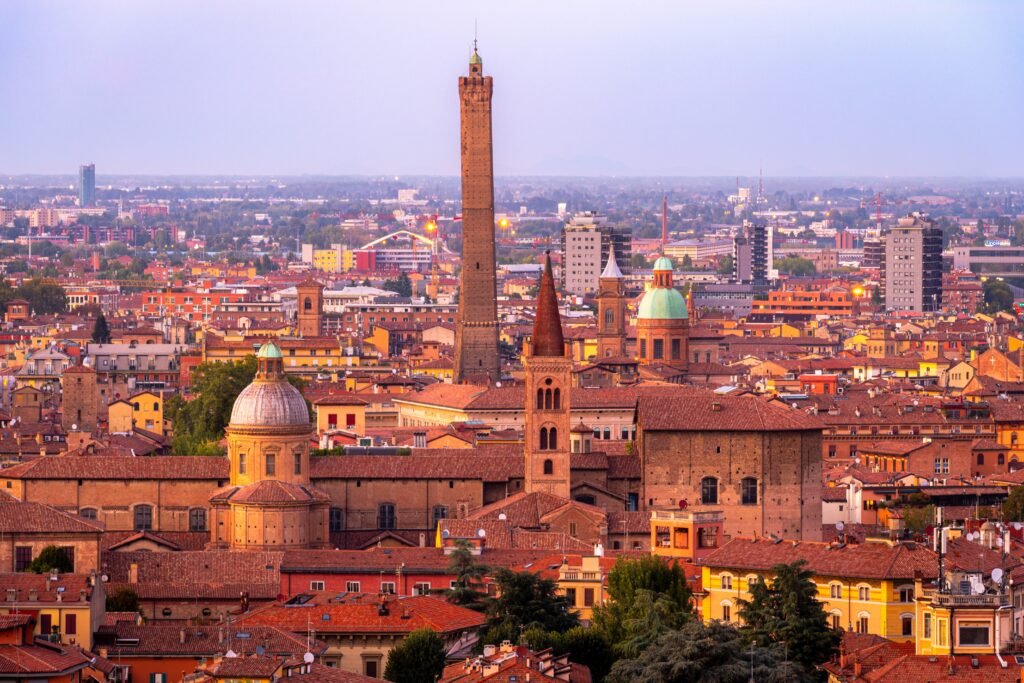Seoul, the vibrant heart of South Korea, seamlessly blends the old with the new, offering a unique travel experience for every type of adventurer. From historical palaces and bustling markets to cutting-edge technology and K-pop culture, this city has it all. Planning a trip to Seoul? Check out the best flights. Join us on a journey through the top things to do in Seoul, where tradition meets modernity, creating an unforgettable travel experience.
Table of Contents
Gyeongbokgung Palace: A Glimpse into Korea’s Royal Past
History: Gyeongbokgung Palace, also known as the “Palace Greatly Blessed by Heaven,” stands as the grandest of the Five Grand Palaces built during the Joseon Dynasty. Constructed in 1395 by King Taejo, the founder of the Joseon Dynasty, it served as the main royal residence and government seat for centuries.
Architectural Marvels: The palace complex is an architectural masterpiece, boasting over 330 buildings spread across a vast area. Its main gate, Gwanghwamun, is an iconic symbol of Seoul, adorned with intricate carvings and two imposing statues of mythical creatures known as Haetae.
Changing of the Guard Ceremony: One of the must-see attractions at Gyeongbokgung is the Changing of the Guard Ceremony. Held at the main gate, Gwanghwamun, this ceremony is a colorful reenactment of the royal guard changing shifts, complete with traditional costumes, weapons, and a procession that captures the essence of Korea’s royal past.
National Folk Museum of Korea: Situated on the palace grounds, the National Folk Museum provides a comprehensive look into the daily lives of Koreans throughout history. Exhibits include traditional clothing, household items, and artifacts that offer a glimpse into the customs and traditions of the Korean people.
Gyeonghoeru Pavilion and Hyangwonjeong Pond: The palace is adorned with picturesque features, including the Gyeonghoeru Pavilion and Hyangwonjeong Pond. Gyeonghoeru is a stunning pavilion situated on an artificial island in a large pond. It was the site of important state banquets and ceremonies. The surrounding pavilions and bridges create a serene atmosphere, making it a popular spot for both locals and tourists.

Royal Residences: Within the palace complex, you’ll find several residences that showcase the architecture and lifestyle of the Joseon Dynasty royals. Notable among them is Geoncheonggung, a small palace within the palace, featuring beautiful gardens and a mix of traditional Korean and Western architectural styles.
Restoration Efforts: Throughout its history, Gyeongbokgung Palace has faced destruction and reconstruction multiple times, particularly during the Japanese invasions in the late 16th century and the Korean War in the 20th century. The ongoing restoration efforts aim to bring back the palace to its former glory, preserving its historical significance for future generations.
Visiting Tips:
- Consider joining a guided tour to gain in-depth knowledge about the palace’s history and significance.
- Don traditional Hanbok attire, available for rent nearby, for a more immersive experience.
- Check the schedule for special events, performances, and cultural programs that may be happening within the palace grounds.
Gyeongbokgung Palace stands not only as a historical relic but as a living testament to Korea’s rich cultural heritage. Exploring its grand halls, pavilions, and expansive grounds is a journey back in time, offering a profound understanding of the royal past that has shaped modern South Korea. Make sure to allocate sufficient time to soak in the beauty and significance of Gyeongbokgung on your visit to Seoul.
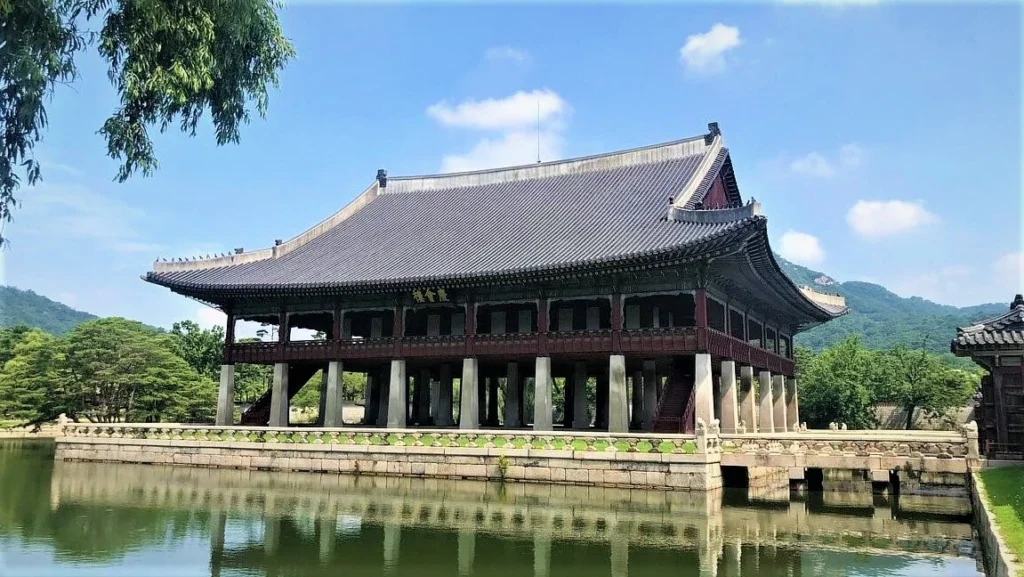
Insadong: Art, Antiques, and Street Food Galore
Cultural Nexus: Nestled in the heart of Seoul, Insadong is a vibrant neighborhood that encapsulates the essence of traditional Korean culture. Its narrow streets are a fusion of modern and historic elements, making it a must-visit destination for those seeking art, antiques, and delectable street food.
Art Galleries and Studios: Insadong is a haven for art enthusiasts. The streets are lined with numerous art galleries, showcasing a diverse range of works, from contemporary pieces to traditional Korean art. Many galleries feature exhibitions by local artists, providing a platform for emerging talents to shine. Don’t be surprised if you come across open studios where artists are creating and showcasing their work.
Tea Houses and Cafés: As you stroll through Insadong’s labyrinthine alleys, you’ll encounter charming tea houses and cafés. These establishments often boast traditional Korean architecture and offer a serene escape from the bustling streets. Relax with a cup of aromatic Korean tea, and indulge in the tranquil ambiance that pervades these unique spaces.
Antique Shops and Souvenirs: Insadong is renowned for its antique shops, where you can find a wide array of traditional Korean artifacts, pottery, and art pieces. Whether you’re a serious collector or just browsing, the antique shops offer a glimpse into Korea’s rich history and craftsmanship. Additionally, the area is a treasure trove for unique souvenirs, ranging from handmade crafts to quirky trinkets.
Ssamziegil Mall: At the heart of Insadong lies Ssamziegil Mall, a multi-story shopping complex that encapsulates the spirit of Insadong. The mall is not just a shopping destination; it’s an artistic journey. The building’s unique spiral design houses a variety of boutiques, galleries, and craft shops. Each floor is a discovery, featuring local designers and artists.
Street Performances and Festivals: Insadong comes alive with street performances and cultural festivals, especially during weekends. Talented street performers showcase traditional music, dance, and even contemporary performances, creating an immersive experience for visitors. Keep an eye on the local events calendar to catch these dynamic displays of artistic expression.
Street Food Delights: Insadong is a food lover’s paradise, offering a tantalizing array of street food. From hotteok (sweet pancakes) to tteokbokki (spicy rice cakes) and odeng (fish cake skewers), the options are diverse and delicious. Embrace the lively atmosphere as you sample these delectable treats from street vendors, creating a culinary adventure within the cultural haven.
Hanbok Experience: For a truly immersive experience, consider donning a hanbok, the traditional Korean attire available for rent in Insadong. Wandering through the streets in these vibrant, beautifully designed garments adds an extra layer of cultural richness to your visit.
Insadong isn’t just a neighborhood; it’s a living canvas that beautifully blends tradition with contemporary flair. Whether you’re an art aficionado, a history buff, or a foodie seeking culinary delights, Insadong promises an unforgettable journey through the heart of Seoul’s cultural heritage. As you explore its hidden corners and engage with its vibrant offerings, you’ll find Insadong to be a microcosm of South Korea’s artistic soul.
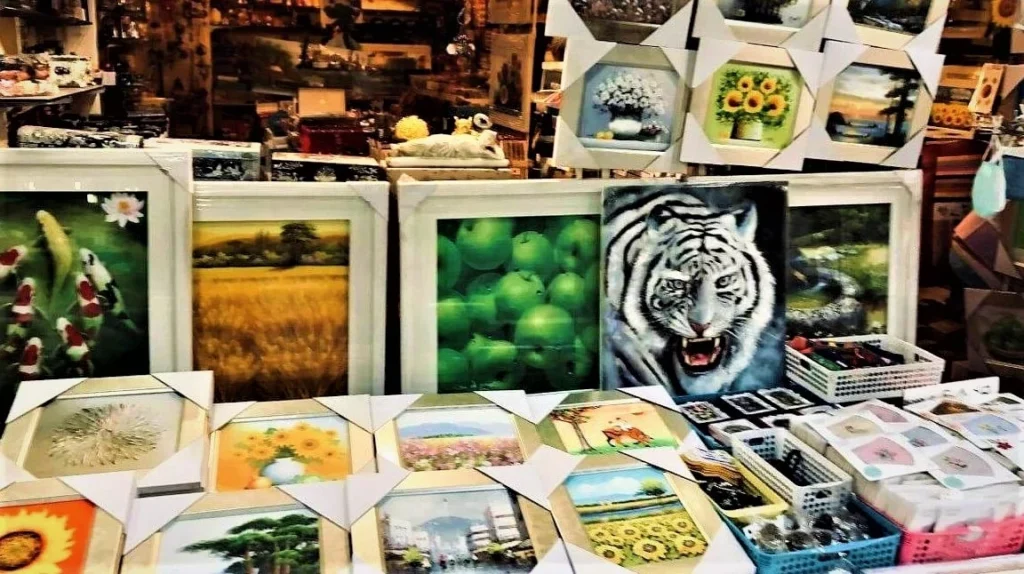
Bukchon Hanok Village: Tranquility Amidst Modernity
Historical Gem: Bukchon Hanok Village, nestled between Gyeongbokgung Palace and Changdeokgung Palace, is a living museum that transports visitors back to the Joseon Dynasty. Hanok refers to traditional Korean houses, and this village is a well-preserved enclave of these architectural gems. Wander through its narrow lanes, and you’ll find yourself surrounded by the tranquility of a bygone era.
Preservation of Tradition: One of the remarkable aspects of Bukchon Hanok Village is its commitment to preserving traditional Korean architecture. The village is home to hundreds of hanoks, many of which have been meticulously restored to showcase their original beauty. The architecture features tiled roofs, wooden beams, and a unique layout that harmonizes with the natural surroundings.
Hanbok Experience: To truly immerse yourself in the spirit of Bukchon, consider renting a hanbok (traditional Korean attire) from one of the many rental shops in the area. As you stroll through the village in these vibrant garments, you’ll feel like you’ve stepped back in time, creating a picturesque scene against the backdrop of the ancient hanoks.
Panoramic Views: Bukchon Hanok Village is situated on a series of hills, providing breathtaking panoramic views of Seoul. As you meander through the alleyways, you’ll discover spots like Bukchon Observatory, where you can capture stunning vistas of the city skyline juxtaposed with the traditional rooftops of the hanoks.

Cafés and Art Galleries: Amidst the historical charm, Bukchon has a contemporary side. The village is dotted with trendy cafés, art galleries, and boutiques. Step into a hanok-turned-café to enjoy a cup of traditional tea or modern coffee while appreciating the fusion of old and new. Art galleries showcase both traditional and modern works, creating a dynamic cultural experience.
Bukchon Cultural Center: For a deeper understanding of the history and culture of Bukchon, visit the Bukchon Cultural Center. This institution provides information about the village’s heritage, architectural significance, and ongoing preservation efforts. It often hosts workshops and cultural events that allow visitors to engage with traditional Korean crafts and activities.
Hanjungsik (Korean Traditional Meal): Several hanoks in Bukchon have been transformed into restaurants offering Hanjungsik, a traditional Korean multi-course meal. Dining in one of these establishments not only satisfies your taste buds but also provides a sensory journey into Korea’s culinary traditions.
Visitor Etiquette: While exploring Bukchon Hanok Village, it’s essential to be mindful of the fact that people still live in many of these hanoks. Visitors are encouraged to respect the residents’ privacy and keep noise levels to a minimum, contributing to the preservation of the village’s tranquil atmosphere.
Bukchon Hanok Village is not just a tourist destination; it’s a harmonious blend of history, culture, and modernity. The village offers a serene escape from the bustling city, allowing visitors to experience the beauty of traditional Korean life. As you explore its winding alleys and appreciate the meticulous preservation of hanoks, you’ll discover a peaceful haven that stands as a testament to Seoul’s commitment to preserving its rich cultural heritage.
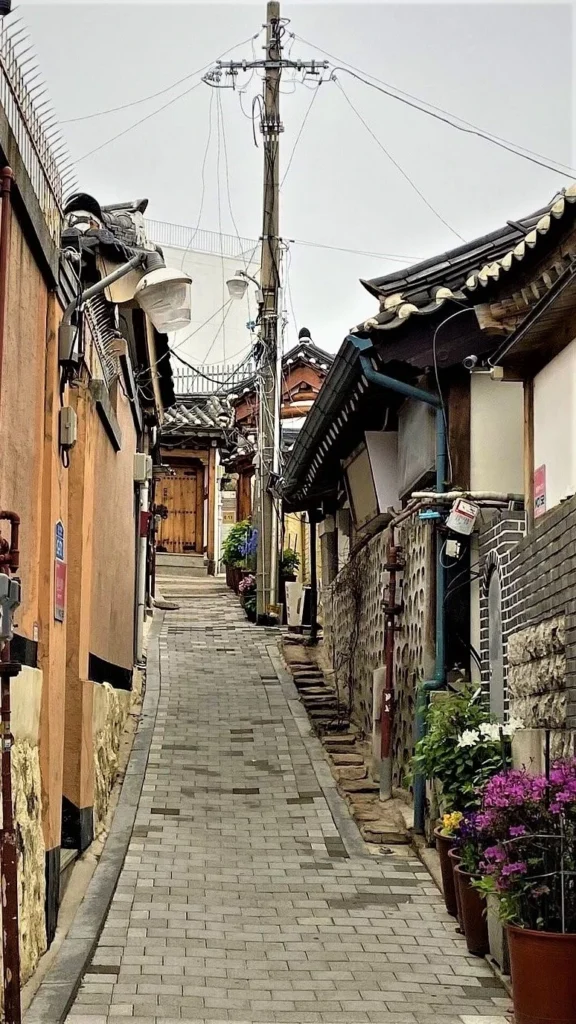
N Seoul Tower: Panoramic Views of the Cityscape
Iconic Landmark: Standing proudly atop Namsan Mountain, N Seoul Tower is an iconic symbol of Seoul’s skyline. Also known as Namsan Tower or Seoul Tower, this structure has become a must-visit destination for locals and tourists alike, offering breathtaking panoramic views of the city.
History and Construction: The idea for N Seoul Tower was conceived in the early 1960s as part of an urban development project. Construction began in 1969, and the tower was completed in 1971. Over the years, it has undergone renovations and technological upgrades, cementing its status as a modern and dynamic landmark.
Architectural Marvel: The tower stands at an impressive height of 236.7 meters (777 feet), and its design combines elements of traditional Korean aesthetics with modern architectural concepts. The exterior is adorned with thousands of LED lights that create a dazzling display at night, turning the tower into a radiant beacon visible from various points in the city.
Panoramic Observation Decks: The main attraction of N Seoul Tower is its observation decks, which provide visitors with 360-degree views of Seoul and its surrounding landscapes. The decks are equipped with high-powered telescopes and informational panels, allowing guests to identify key landmarks and gain a deeper understanding of the city’s layout.
Love Locks and Romantic Vibes: One of the unique features of N Seoul Tower is the “Locks of Love” phenomenon. Visitors contribute to the romantic ambiance by attaching padlocks with their written messages to the fences surrounding the tower. The panoramic backdrop of Seoul’s cityscape adds an extra layer of charm, making it a popular spot for couples and those seeking a touch of romance.
Namsan Cable Car and Hiking Trails: Reaching N Seoul Tower is an experience in itself. While there’s the option to take a cable car up Namsan Mountain, adventurous visitors can embark on a scenic hike through Namsan Park, surrounded by lush greenery and occasional cultural landmarks. The journey adds an element of nature to the overall experience.
Seasonal Events and Illuminations: Throughout the year, N Seoul Tower hosts various events and festivals, making it a dynamic attraction regardless of the season. The tower is often illuminated in different colors to mark special occasions, creating a dazzling spectacle visible from afar.
Sky Restrooms: Adding a touch of luxury, the observation decks feature unique sky restrooms with glass walls that provide an unparalleled view of the city. It’s an experience that combines comfort with a breathtaking backdrop.
N Seoul Tower is not just an observation point; it’s a cultural and architectural landmark that offers a multifaceted experience. Whether you’re drawn to the panoramic views, the romantic ambiance, or the architectural marvel of the tower itself, a visit to N Seoul Tower promises an unforgettable journey to the heights of Seoul’s vibrant skyline.
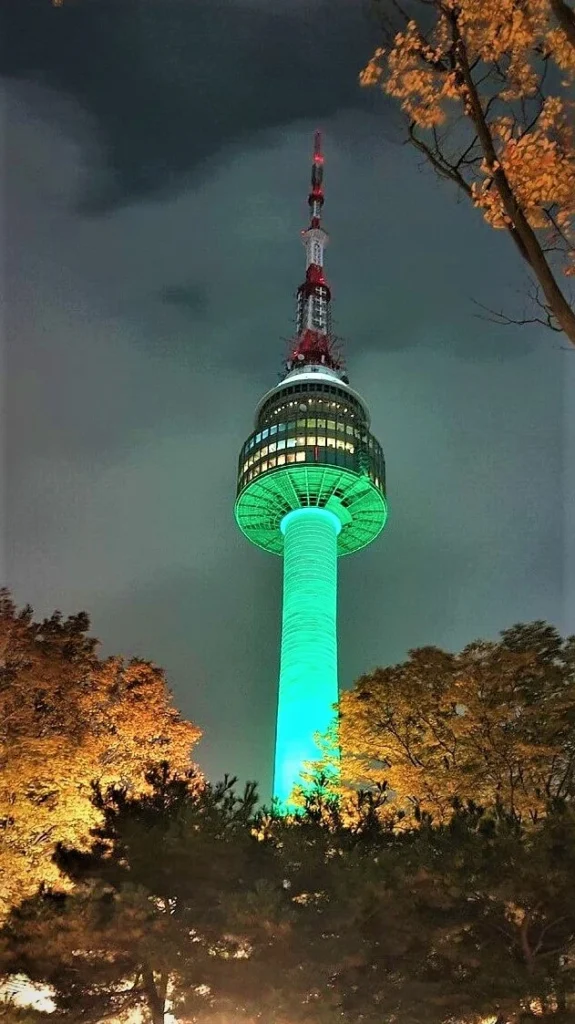
Korean BBQ Experience: Sizzle and Flavor in Every Bite
Culinary Adventure: A trip to Seoul would be incomplete without indulging in the quintessential Korean BBQ experience. This interactive dining style, where diners grill their own meat at the table, has become a global phenomenon. From the sizzle of the grill to the tantalizing aroma of marinated meats, Korean BBQ is a feast for the senses.
Variety of Meats: Korean BBQ offers a diverse selection of meats, ranging from thinly sliced beef (bulgogi) and marinated pork belly (samgyeopsal) to succulent short ribs (galbi). Each type of meat is meticulously prepared and often marinated in a flavorful combination of soy sauce, sesame oil, garlic, and other seasonings, creating a mouthwatering symphony of tastes.
Tabletop Grilling: The hallmark of Korean BBQ is the tabletop grill embedded in the dining table. Diners are provided with raw cuts of meat, and they take charge of the grilling process. This interactive and communal style of dining fosters a lively atmosphere, making it a popular choice for social gatherings, celebrations, and family outings.
Banchan – Side Dishes Extravaganza: No Korean BBQ experience is complete without an array of banchan, which are complimentary side dishes served in small portions. These can include kimchi (fermented vegetables), pickled radishes, various vegetable dishes, and dipping sauces. Banchan not only complement the grilled meats but also add a spectrum of flavors and textures to the overall meal.

DIY Wraps: In addition to grilling meat, another enjoyable aspect of Korean BBQ is creating your own wraps. Diners often use lettuce or perilla leaves to encase grilled meat, adding a dollop of ssamjang (a thick, spicy paste) and a dab of garlic, creating personalized flavor bombs that burst with taste.
Sizzling Hotplates and Cast Iron Grills: Depending on the restaurant, Korean BBQ is prepared on a sizzling hotplate or a cast iron grill. The choice between the two imparts distinct textures and flavors to the meats. Some prefer the seared edges from a hotplate, while others enjoy the smokiness that comes from grilling over an open flame.
Korean BBQ Etiquette: Participating in a Korean BBQ feast comes with some unspoken rules. It’s customary to wait for the designated grill master to handle the cooking, and everyone shares the responsibility. Additionally, it’s polite to use scissors provided by the restaurant to cut the grilled meat into bite-sized pieces.
Diverse Dining Settings: Korean BBQ is available in a range of settings, from casual street-side vendors to upscale restaurants. Some establishments focus on specific meat cuts or regional specialties, providing a diverse landscape for enthusiasts to explore.
The Korean BBQ experience goes beyond just a meal; it’s a cultural immersion and a celebration of communal dining. From the sizzle of the grill to the explosion of flavors in every bite, Korean BBQ showcases the rich culinary heritage of Korea in a way that engages all the senses. So, gather your friends, roll up your sleeves, and savor the sizzle of a Korean BBQ feast in the heart of Seoul.
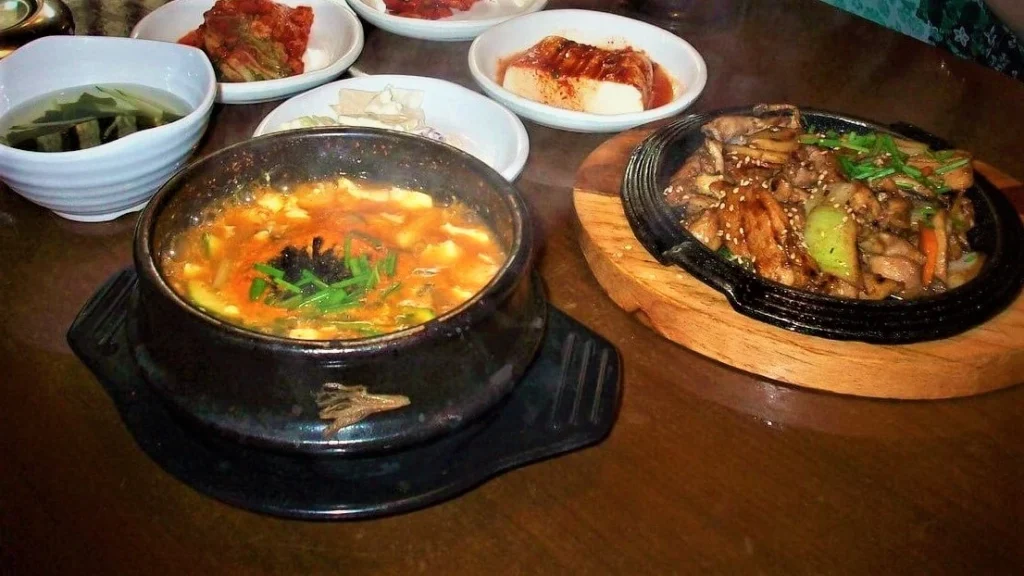
Dongdaemun Design Plaza: Where Architecture Meets Fashion
Architectural Marvel: Dongdaemun Design Plaza (DDP) stands as a testament to Seoul’s commitment to avant-garde architecture and design. Designed by the renowned architect Zaha Hadid, DDP is an iconic landmark that seamlessly blends art, technology, and functionality. The structure, with its futuristic curves and fluid lines, has become a symbol of modern Seoul.
Design and Functionality: DDP is not just a visual masterpiece but a multifunctional space that serves as a hub for design-related activities. It houses exhibition halls, conference rooms, a design museum, and even a rooftop park. The fluidity of the design reflects the dynamic and creative spirit of the city, making it a popular destination for both design enthusiasts and casual visitors.
Fashion Hub: Dongdaemun has long been synonymous with fashion, and DDP further solidifies this association. The plaza is surrounded by a vibrant fashion district, with numerous shopping malls, boutiques, and markets catering to the latest trends. Fashion events, pop-up stores, and runway shows frequently take place within the DDP complex, making it a dynamic center for the ever-evolving world of Korean fashion.
DDP Design Lab and Museum: The DDP complex includes the Design Lab, a space dedicated to nurturing emerging talent and fostering innovation in design. The Design Museum within DDP showcases a diverse range of exhibitions, from fashion and product design to architecture and visual arts. Visitors can explore the cutting-edge creations of both local and international designers.
LED Rose Garden: One of the most enchanting features of DDP is the LED Rose Garden, a digital art installation that illuminates the plaza at night. Thousands of LED roses change colors, creating a magical and romantic atmosphere. This interactive display has become a favorite spot for couples and photographers, adding an extra layer of allure to the plaza.
Doota Mall and Dongdaemun Design Plaza Park: Connected to DDP is Doota Mall, a trendy shopping complex that offers a curated selection of fashion and lifestyle brands. The Dongdaemun Design Plaza Park, located on the rooftop, provides a green oasis in the heart of the city. It’s a peaceful retreat where visitors can relax and enjoy panoramic views of the surrounding area.
Nightlife and Events: As the sun sets, DDP transforms into a dazzling spectacle with its illuminated exterior. The plaza often hosts nighttime events, performances, and light shows, creating a lively atmosphere that extends into the surrounding Dongdaemun district. The vibrant nightlife makes DDP a favorite destination for those seeking entertainment after dark.
Accessibility and Integration: DDP’s central location makes it easily accessible, and its integration with the surrounding area enhances the overall experience. Visitors can seamlessly transition from exploring the plaza to indulging in shopping, dining, and entertainment in the bustling Dongdaemun district.
Dongdaemun Design Plaza is not just a building; it’s a cultural and creative nexus that embodies the spirit of modern Seoul. From its awe-inspiring architecture to its role as a fashion and design hub, DDP offers a dynamic and immersive experience. Whether you’re a design enthusiast, a fashionista, or simply a curious traveler, a visit to Dongdaemun Design Plaza promises an encounter with the cutting edge of creativity in the heart of South Korea’s capital.
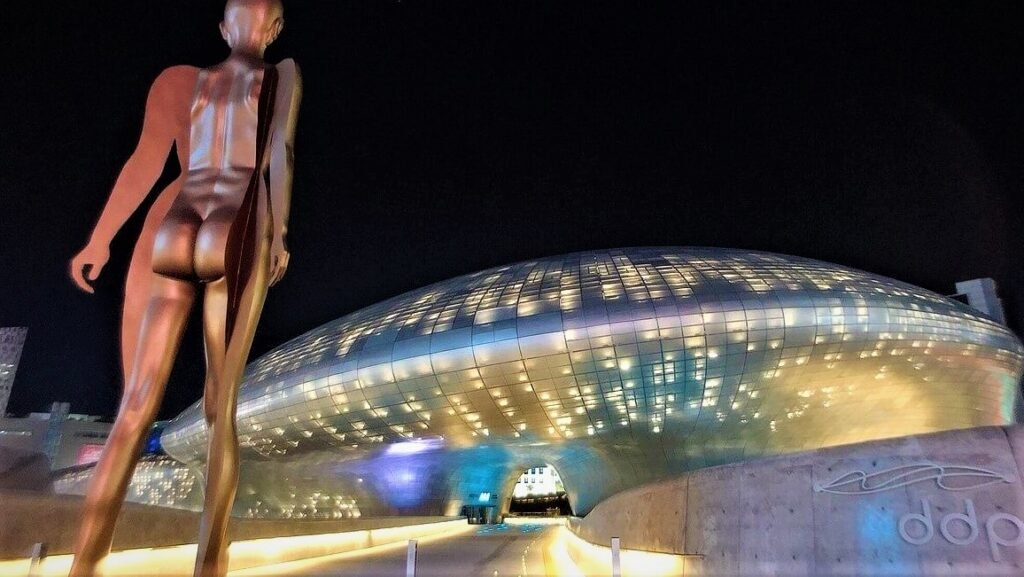
Han River: Relaxation by the Water
Geographical Heartbeat: Flowing through the heart of Seoul, the Han River (Hangang) is more than just a body of water; it’s a central element in the city’s geography and culture. The river serves as a natural divider, splitting the city into distinct halves and providing a scenic backdrop to the bustling urban landscape.
Breathtaking Scenery: One of the main draws of the Han River is its breathtaking scenery. The riverbanks are adorned with parks, walking trails, and recreational areas, offering a picturesque escape from the urban hustle and bustle. Whether you’re taking a leisurely stroll, biking along the dedicated paths, or simply enjoying a picnic, the Han River provides a tranquil setting to unwind.
Hangang Parks: Numerous parks line the Han River, each offering its unique charm. Popular ones include Yeouido Hangang Park, Ttukseom Hangang Park, and Banpo Hangang Park. These green spaces provide a range of amenities, including exercise equipment, playgrounds, and open lawns for gatherings. Many locals and visitors alike come to these parks to enjoy outdoor activities and festivals.
Biking and Walking Trails: The Han River is encircled by extensive biking and walking trails, making it a haven for outdoor enthusiasts. Rent a bike from one of the many rental stations, and pedal along the riverside paths, taking in the scenic views and fresh air. Walking trails offer a more relaxed pace, allowing you to appreciate the serenity of the river at your own leisure.
Cruises and Ferries: For a different perspective, consider taking a river cruise or ferry ride along the Han. These boat excursions provide panoramic views of Seoul’s skyline, especially stunning at night when the city lights reflect on the water. Some cruises offer dining options, allowing you to enjoy a meal while drifting along the river.

Recreation and Water Sports: The Han River is not just for passive enjoyment; it’s a playground for various water sports and recreational activities. You can find kayaking, windsurfing, and water skiing facilities along the riverbanks, catering to both beginners and experienced enthusiasts. These activities add an adventurous flair to your Han River experience.
Picnics and Relaxation: The riverbanks are dotted with numerous spots ideal for picnics and relaxation. Families, friends, and couples often gather here, spreading out blankets and enjoying the simple pleasure of a riverside picnic. The serene atmosphere makes it a popular destination for those seeking a peaceful escape from city life.
Banpo Rainbow Fountain: At Banpo Hangang Park, you can witness the mesmerizing Banpo Rainbow Fountain. This musical fountain show, set against the backdrop of the river, features colorful lights and choreographed water jets that dance to the rhythm of music. It’s a dazzling spectacle that draws both locals and tourists, especially in the evenings.
Festivals and Events: Throughout the year, the Han River hosts various festivals and events. From music concerts to cultural celebrations, these gatherings bring the community together, creating a vibrant and festive atmosphere along the riverbanks.
The Han River isn’t just a body of water; it’s a dynamic and integral part of Seoul’s urban landscape. Whether you’re seeking outdoor activities, a peaceful retreat, or a romantic evening by the water, the Han River provides a diverse range of experiences. As the river flows through the heart of Seoul, it weaves a thread of tranquility, offering a respite from the city’s energetic pace.
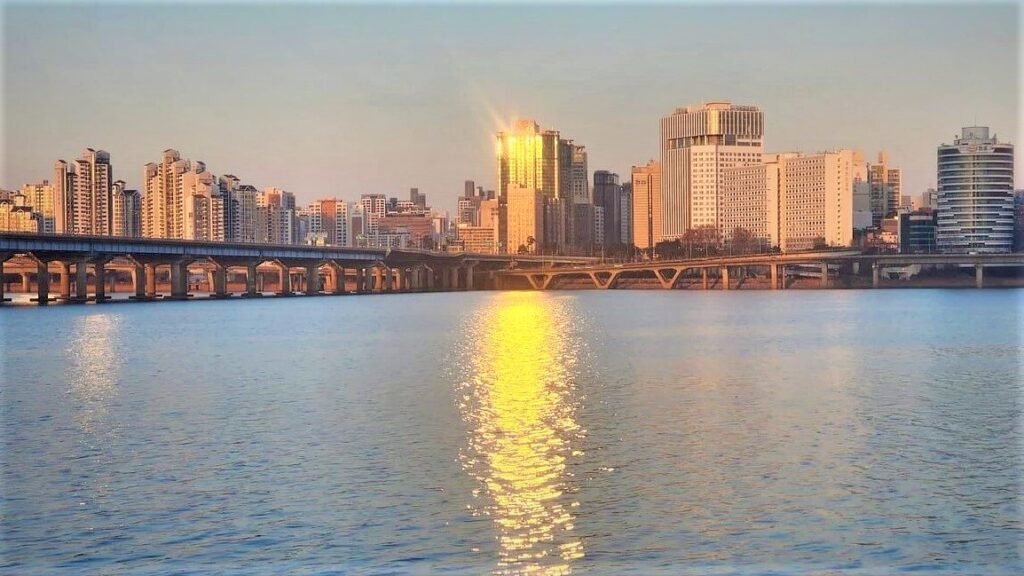
Things To Do In Seoul South Korea: Conclusion
Seoul captivates with its blend of tradition and modernity, offering a travel experience like no other. Whether you’re exploring historical palaces, indulging in street food, or enjoying the vibrant cultural scene, Seoul has something for every traveler. Travel safely with the best travel insurance. So, pack your bags, embrace the energy of the city, and embark on a Seoul-searching adventure that will leave you with lasting memories.
Check out the other blogs.
